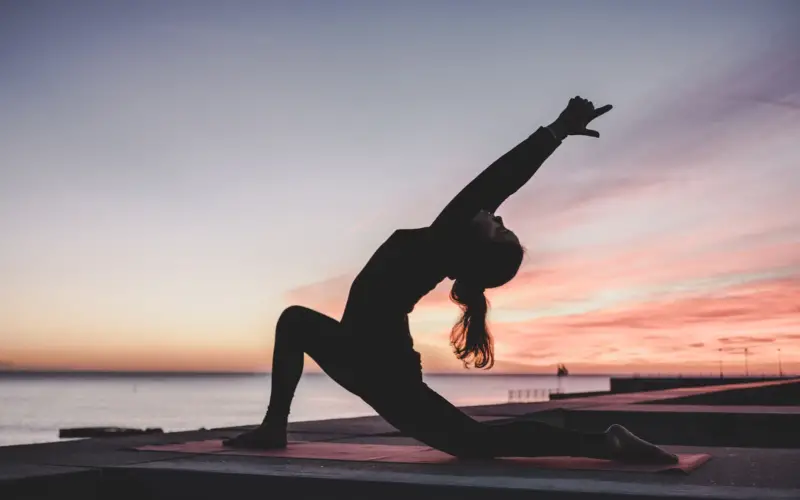Table of Contents Show
Yoga, an ancient practice rooted in bringing harmony to the body and mind, has often been associated with natural ways of achieving a heightened state of awareness. In recent times, a contemporary twist has emerged where individuals are combining yoga with cannabis use, claiming it can enhance their practice. This combination of “getting high” and practicing yoga has sparked curiosity and a following, as well as debates about the efficacy and safety of such an approach.
Disclosure: As an Amazon Associate I earn from qualifying purchases.
https://unsplash.com/photos/silhouette-photography-of-woman-doing-yoga-F2qh3yjz6Jk
Yoga and THC: Enhanced Mind-Body Connection
Proponents of combining yoga with cannabis suggest that the altered state of consciousness can deepen the mind-body connection. THC vape pen, or THC, the psychoactive compound in cannabis, may lower inhibitions and self-consciousness, which can lead to a more profound immersion in the yoga experience. Practitioners often report that yoga poses (asanas) feel more fluid and that they can hold poses for longer periods, experiencing a greater sense of relaxation and release.
Heightened Sensory Awareness
Cannabis is known to heighten senses, which can make the tactile sensations of a yoga practice more vivid. The texture of the yoga mat, the sound of calming music, or the scent of incense can become more pronounced, potentially leading to a more attentive and mindful practice.
You may also like: THC and Yoga: What makes them a good combination?
Stress Relief and Relaxation
Stress Relief and Relaxation
https://unsplash.com/photos/green-cannabis-leaves-and-black-glass-drops-bottle-b2haCjfk_cM
One of the most sought-after effects of both yoga and cannabis is stress relief. When combined, the stress-reducing properties of both may be amplified. The natural endorphins released during yoga, coupled with the calming effects of cannabis, may produce a state of relaxation that is deeper than what might be achieved through yoga alone.
Pain Management
Yoga is often practiced for pain relief and management. Similarly, cannabis has been widely recognized for its analgesic properties. When used together, there’s a possibility that cannabis could make yoga more accessible and comfortable for those with chronic pain, allowing them to engage in practices that might otherwise be too painful.
Exploring the Inner Self
Yoga is as much a spiritual practice as it is physical. The introspective qualities of cannabis may encourage deeper self-reflection during a yoga session. This could lead to a more introspective and potentially transformative practice, as individuals might be able to connect with their inner selves on a more profound level.
The Debate on Focus
While some argue that being high can enhance focus, critics assert that the intoxicating effects of cannabis can detract from the clarity and concentration that yoga aims to cultivate. Yoga purists might argue that the true essence of yoga is to achieve a clear mind and self-discipline without external substances.
Safety Considerations
Practicing yoga under the influence of cannabis is not without risks. It can impair balance, reaction time, and judgment, increasing the risk of injury during physical activity. Those considering combining the two should be cautious, start with gentle poses, and be aware of their own limits.
Legal and Ethical Implications
It’s crucial to note the legal status of cannabis, which varies by jurisdiction. Where cannabis is legal, practitioners should still consider the ethical aspects of yoga, which emphasize self-control and purity, and whether using cannabis aligns with their personal yoga journey.
Conclusion
The merging of yoga with cannabis use is a modern phenomenon that has sparked interest and controversy. While some individuals find that being high can augment their yoga practice, others maintain reservations about its effects on focus and safety.
It is a personal choice that requires mindful consideration of the legal landscape, individual health, and the philosophical teachings of yoga. As with any such practice, it should be approached with caution, respect for the tradition of yoga, and a clear understanding of personal motives and boundaries.




